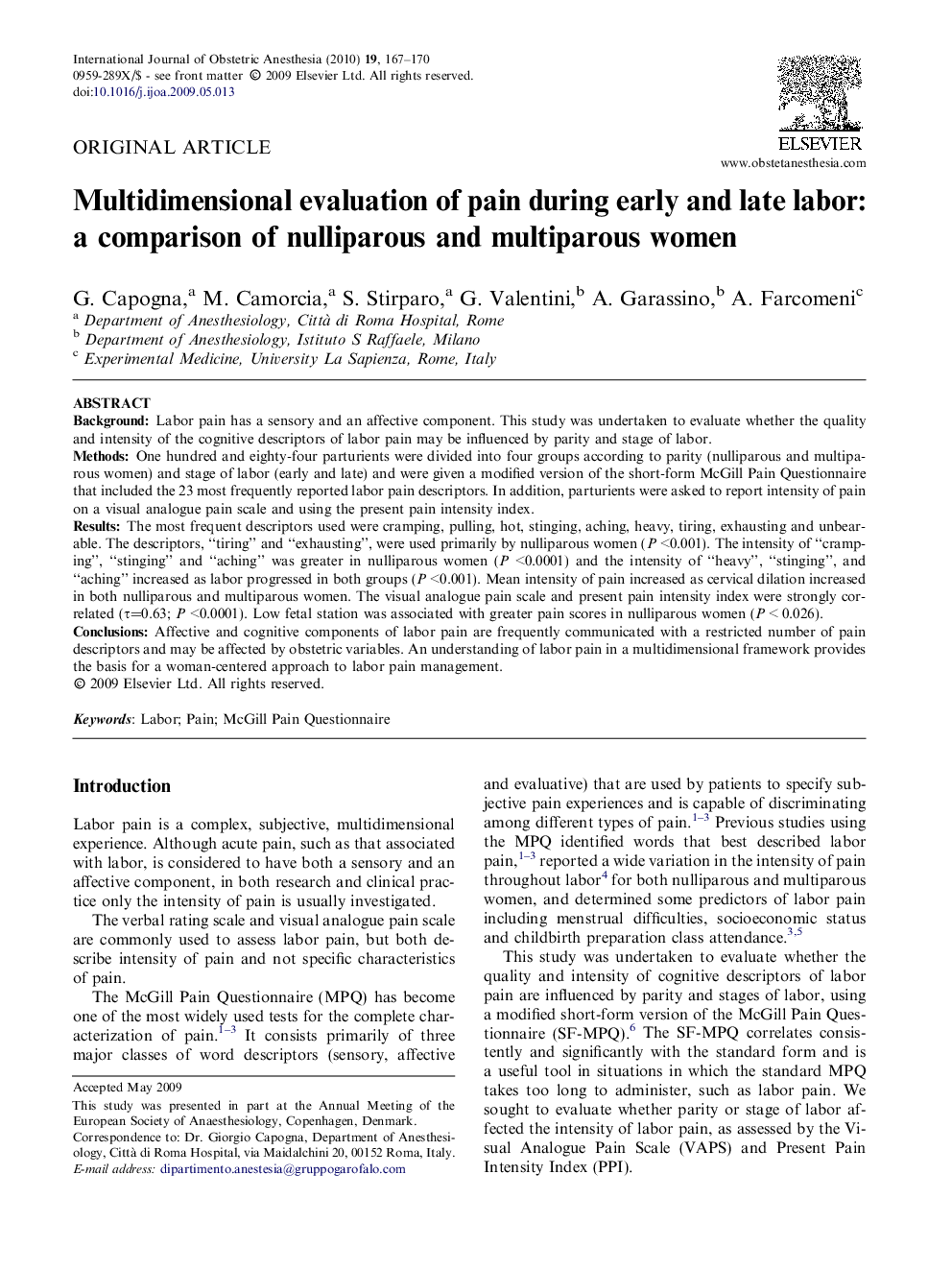| Article ID | Journal | Published Year | Pages | File Type |
|---|---|---|---|---|
| 2757986 | International Journal of Obstetric Anesthesia | 2010 | 4 Pages |
BackgroundLabor pain has a sensory and an affective component. This study was undertaken to evaluate whether the quality and intensity of the cognitive descriptors of labor pain may be influenced by parity and stage of labor.MethodsOne hundred and eighty-four parturients were divided into four groups according to parity (nulliparous and multiparous women) and stage of labor (early and late) and were given a modified version of the short-form McGill Pain Questionnaire that included the 23 most frequently reported labor pain descriptors. In addition, parturients were asked to report intensity of pain on a visual analogue pain scale and using the present pain intensity index.ResultsThe most frequent descriptors used were cramping, pulling, hot, stinging, aching, heavy, tiring, exhausting and unbearable. The descriptors, “tiring” and “exhausting”, were used primarily by nulliparous women (P <0.001). The intensity of “cramping”, “stinging” and “aching” was greater in nulliparous women (P <0.0001) and the intensity of “heavy”, “stinging”, and “aching” increased as labor progressed in both groups (P <0.001). Mean intensity of pain increased as cervical dilation increased in both nulliparous and multiparous women. The visual analogue pain scale and present pain intensity index were strongly correlated (τ=0.63; P <0.0001). Low fetal station was associated with greater pain scores in nulliparous women (P < 0.026).ConclusionsAffective and cognitive components of labor pain are frequently communicated with a restricted number of pain descriptors and may be affected by obstetric variables. An understanding of labor pain in a multidimensional framework provides the basis for a woman-centered approach to labor pain management.
